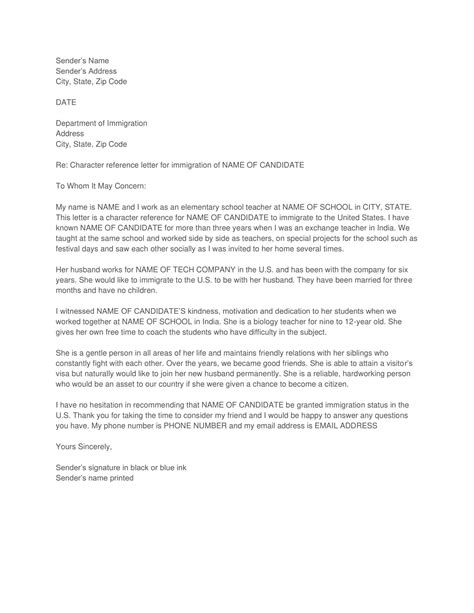A Step-by-Step Guide to Stellar Immigration Letters
Immigration letters are crucial documents that can significantly impact the success of your application. Whether you're seeking a visa, green card, or other immigration benefits, a well-crafted letter can make all the difference. This comprehensive guide provides a step-by-step approach to writing stellar immigration letters that clearly and persuasively convey your case. We'll cover everything from understanding the purpose of different types of letters to mastering the art of persuasive writing.
Understanding the Purpose of Your Immigration Letter
Before diving into the writing process, it's crucial to understand the specific purpose of your letter. Different immigration applications require different types of supporting documentation, and your letter's role will vary accordingly. Common types include:
-
Letters of Support: These letters provide evidence of your ties to your home country or your prospective country of residence, demonstrating your intention to return or your ability to integrate successfully. They might come from employers, family members, or community leaders.
-
Explanatory Letters: These letters clarify any ambiguities or inconsistencies in your application. They're often used to address gaps in employment history, travel records, or financial documentation.
-
Letters of Invitation: These letters are used when someone is sponsoring your immigration application, outlining their ability and willingness to support you financially and otherwise.
-
Personal Statements: For certain applications, a personal statement allows you to articulate your reasons for immigrating and showcase your personal qualities. This is your chance to tell your story compellingly.
Step-by-Step Guide to Writing a Stellar Immigration Letter
Regardless of the letter's type, the following steps ensure a strong, persuasive, and effective document:
1. Know Your Audience: Immigration officers are busy professionals who need to process applications efficiently. Your letter should be clear, concise, and easy to read. Avoid jargon or overly technical language.
2. Structure Your Letter: A well-structured letter is crucial for readability and impact. Follow a clear format:
- Heading: Include your name and contact information at the top.
- Date: Clearly state the date of writing.
- Recipient: Address the letter to the appropriate immigration officer or agency.
- Introduction: Briefly state the purpose of your letter and its relevance to your application.
- Body Paragraphs: Provide detailed and specific information, supporting your claims with evidence. Each paragraph should focus on a single point.
- Conclusion: Summarize your main points and reiterate your request.
- Closing: Use a professional closing, such as "Sincerely" or "Respectfully."
- Signature: Sign the letter by hand.
3. Craft Compelling Content: Your letter's content should be factual, accurate, and persuasive.
- Use Evidence: Back up all your claims with concrete evidence, such as employment records, bank statements, or letters from sponsors.
- Be Specific: Avoid vague statements. Use precise language and quantify your claims whenever possible.
- Maintain a Professional Tone: Avoid emotional language or excessive personal details. Focus on presenting your case objectively and professionally.
- Proofread Carefully: Errors can undermine your credibility. Carefully review your letter for grammar, spelling, and punctuation mistakes before submitting it.
4. Address Potential Concerns: Anticipate potential questions or concerns the immigration officer might have and address them proactively in your letter. This demonstrates foresight and strengthens your application.
5. Seek Professional Assistance (If Needed): If you're unsure about any aspect of the writing process, consider seeking professional assistance from an immigration lawyer or consultant. They can ensure your letter is legally sound and effectively presents your case.
Frequently Asked Questions (FAQ)
What information should I include in a letter of support?
A letter of support should detail your relationship with the applicant, your knowledge of their character and intentions, and your ability to support them (if applicable). Be specific and provide concrete examples illustrating your claims.
How long should my immigration letter be?
Length isn't as important as clarity and conciseness. Aim for a length that effectively conveys your message without being overly wordy. Typically, 1-2 pages are sufficient.
What is the best way to format my immigration letter?
Use a professional, easy-to-read format with clear headings, paragraphs, and spacing. Use a standard font like Times New Roman or Arial in size 12.
Can I use templates for my immigration letter?
While templates can provide a framework, it's crucial to personalize the letter to your specific circumstances and tailor it to the requirements of your application. Avoid generic templates that don't accurately reflect your unique situation.
What should I do if I make a mistake in my letter?
If you discover an error, it’s best to withdraw the original letter and submit a corrected version as soon as possible. Explain the error and clearly indicate that it's a revised submission.
By following these steps, you can significantly increase your chances of crafting a stellar immigration letter that effectively supports your application. Remember, a well-written letter is a testament to your preparedness and commitment to the immigration process. Good luck!

